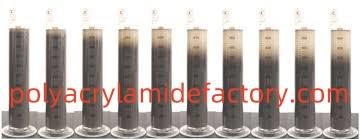Polyacrylamidefactory’s Insights into Oilfield Polyacrylamide Selection for Smarter Operations

Comparing Anionic and Cationic Polyacrylamide for Oilfield Use
In oilfield operations, oilfield polyacrylamide plays a crucial role in enhancing the efficiency of drilling, fracturing, and produced water treatment. The selection between anionic and cationic polyacrylamide depends heavily on the application environment and process requirements. Understanding the differences between the two helps engineers and procurement managers make optimal decisions for stable and cost-effective oil production.
Anionic polyacrylamide carries negatively charged functional groups. It is particularly effective in environments with high levels of suspended solids and inorganic particles, such as in drilling fluid treatment, polymer flooding, and fracturing fluid viscosity control. Its high molecular interaction with clay particles and rock formations allows for better stabilization of the wellbore and reduction of fluid loss.
Cationic polyacrylamide, on the other hand, carries positively charged groups, making it ideal for bonding with negatively charged substances like organic matter. It is widely applied in oilfield wastewater treatment, especially for sludge dewatering and removal of oil-in-water emulsions. The cationic variant is valued for its strong flocculation capability and compatibility with biological treatment systems.
Here is a general comparison of the two types based on their oilfield applications:
|
Property |
Anionic Polyacrylamide |
Cationic Polyacrylamide |
|
Charge Type |
Negative |
Positive |
|
Ideal Application |
Drilling fluids, fracturing, EOR |
Sludge dewatering, produced water |
|
Particle Target |
Clay, rock particles, metal ions |
Organic matter, emulsified oils |
|
Water Treatment Suitability |
Moderate to High |
Very High |
|
Compatibility with Salts |
Good |
Moderate |
|
Environmental Adaptability |
Stable in high mineral conditions |
Effective in biological systems |
In actual practice, many oilfield operators benefit from using both types in sequence or combination, especially in complex water treatment systems where a two-stage flocculation is required.
When considering a supplier for oilfield-grade polyacrylamide, it is essential to partner with a manufacturer that not only understands the chemical behavior of these polymers but also offers technical support tailored to site-specific conditions.
At Polyacrylamidefactory, we specialize in the development and production of both anionic and cationic polyacrylamide emulsions and powders for oilfield use. Our solutions are tested for performance under diverse conditions including high salinity, shear stress, and variable pH environments. Whether your objective is to optimize polymer flooding efficiency or improve sludge handling in produced water treatment, our team is committed to helping you select and apply the right product.
Explore our expertise and product lines here:
https://www.polyacrylamidefactory.com/news/industry-news/how-does-hengfeng-anionic-polyacrylamide-emulsion-work.html
- Marketing & Social Media
- AI & Digital Tools
- Science & Innovation
- Business & Finance
- Education & Learning
- Technology & Gadgets
- Family & Relationships
- Parenting & Kids
- Fashion & Beauty
- Travel & Culture
- News & Politics
- Home
- Literature
- Music
- Networking
- Other
- Party
- Religion
- Shopping
- Sports
- Theater
- Wellness
- Art
- Causes
- Crafts
- Dance
- Drinks
- Film
- Fitness
- Food
- Gardening
- Health
- Oyunlar



